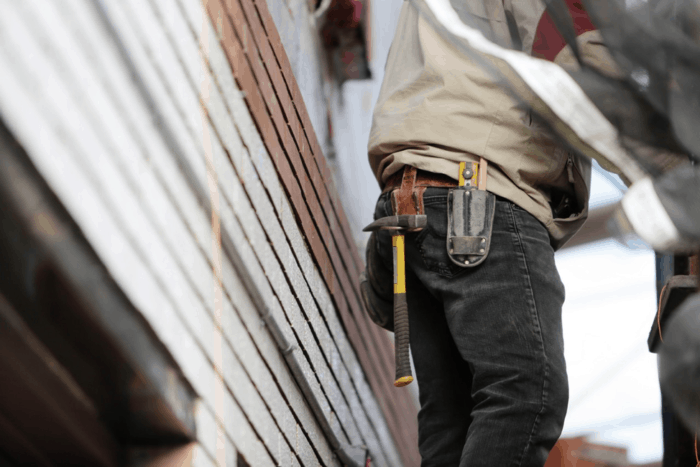Starting the Recovery Process in a Timely Fashion

It’s natural to want things to get moving as quickly as possible if your home has been damaged by a fire. The sooner you get back to normal life, the better. Moving things forward in a timely fashion is important and can save you a lot of money, but there are a few things you should know before you start.
The better prepared you are, the less likely you are to compromise your home insurance claim or give the insurer a reason to reject any part of it. Keep reading to find out more about moving the recovery and reimbursement process forward in a timely fashion.
Document Everything
Documentation should start even before the cleanup process begins. Photograph or even take some quick videos of the fire and smoke damage as soon as the fire department gives you access to the site. Make sure you have evidence of damage suffered to personal belongings before you throw them out or attempt to salvage them.
Documentation is essential if the insurer questions your ownership of specific items, or if the claim winds up in dispute resolution. If the insurer or the insurance adjuster calls into question the validity of your claims, documentation helps prove not only that you did own the item in question, but the extent of the damage or loss.
When an insurer rejects part or all of a claim, policyowners often ask: how does dispute resolution work? Dispute resolution may be appropriate if the homeowner and the adjuster cannot agree about the extent of repairs required, the adequacy of repairs completed, or the value of damaged personal belongings. Below is a brief summary of the process:
- Complete a Proof of Loss form;
- Deliver a demand letter to transfer the file to dispute resolution;
- Select a representative, such as an insurance claims lawyer;
- Your representative and the Insurer’s representatives work together to select an umpire;
- The two representatives negotiate each issue in question;
- Unresolved issues are directed to the umpire; and
- A written determination of the final decisions is created.
Note that if a claim progresses to dispute resolution, each side is responsible for half the cost of the umpire, and the umpire’s decisions are binding.
Additional Living Expenses (ALEs)
There are plenty of reasons homeowners want to move quickly after their home is damaged, not least of which is that they want to get back to life as usual. The sooner the home is repaired, the sooner they can move back in and begin to move past the loss.
There are also practical concerns, especially when it comes to money. Without the use of their house, homeowners must incur increased living expenses. You still have to pay your mortgage even if your home is unusable, and in the meantime, you’re paying for a hotel or a short- or long-term rental. These costs are covered under your ALE insurance.
If you’re asking yourself what are ALEs, they can include:
- Accommodation costs;
- Additional food costs;
- Additional travel costs;
- Storage costs; and/or
- Moving expenses.
ALE coverage is essential for financing the way through the recovery process, but like every aspect of insurance coverage, there are limits. You want to make sure you live within a reasonable budget so that you can ensure that the home is fit and inhabitable before you reach your coverage maximum.

Structural Repairs and ALEs
Structural repairs are usually a time-consuming process, and any small delays can have a big impact on the overall timeline (including potential exhaustion of Additional Living Expenses). Depending on your budget and coverage limits, the repair period on your home might be longer than your policy will cover. Depending on the reason for the extended repair period, you might end up out of pocket for a portion of the increased rent, etc.
Insurance companies keep a list of preferred contractors who they turn to for insurance loss work. They rely on their preferred contractors for an estimate of costs as well as a timeline. If their preferred contractor says they can complete the job in 6 months, that’s often how long the insurer will be prepared to cover the Additional Living Expenses (if coverage lasts that long).
You don’t have to hire the insurer’s preferred vendors, but if you find your own contractor, the insurer will still expect the work to be done on the timeline established by the contractors they regularly work with. If you opt to use your own builder, you will have to act quickly.
Navigating Municipal Permits
Whenever you build, renovate, or repair a home, you need to get the appropriate permits from the municipality. This process can really complicate your timing, and it’s unique to each municipality. It’s important to have a clear understanding as to whether the period of repair (let’s say 6 months as per the example above) begins before or after permits are acquired.
For example, in Surrey, B.C., to apply for a permit to repair fire damage, you need documents such as
- A complete scope of work completed by a professional;
- Building Permit Application Form;
- Owner Authorization Form; and
- Schedules signed by a Registered Professional.
You will also need to submit signed and sealed site plans and fees. Your application is then placed on hold until the city can inspect the site itself.
In most municipalities, fixing fire damage requires a permit. You’ll want to move quickly with the application process so that you can get started rebuilding.
Content Replacement
Timing is also key with regards to content replacement. If your policy provides for their Guaranteed Replacement Value, it may also include a limit as to how long that option will remain available for you to actually replace lost personal belongings.
Your policy might have a specified limit, such as a 180-days or 365-days to replace items at Guaranteed Replacement Value. After this limitation passes, policy holders might only be eligible to receive Actual Cash Value for those same belongings. This is a prime example as to why it’s so important to read your policy carefully after you experience a loss.
The Actual Cash Value of your belongings can be significantly lower than Guaranteed Replacement Cost. Guaranteed Replacement Cost coverage means you receive the amount of money it would cost you to buy a new replacement item for the lost belonging. For example, if you paid $2,000 for a side-by-side refrigerator ten years ago, replacement cost coverage would provide you with $2,000 (or the current sticker-price of the same model). Actual Cash Value coverage only provides what the fridge is worth today. Factoring in depreciation, you could receive less than half the cost of replacing that model.
Working with an Insurance Claims Lawyer
Working with an insurance claims lawyer can help speed up the process, keep you on schedule, and keep your claim on track. No matter how long the recovery period takes, ALE coverage is almost always subject to a maximum. You want to make sure you can move back into your home before your ALE coverage is maxed out.


